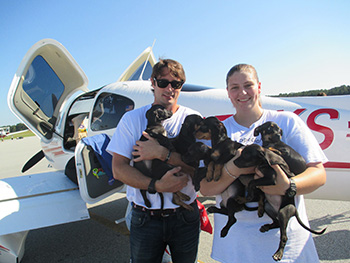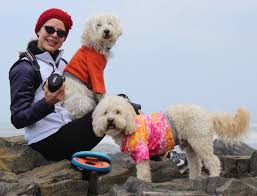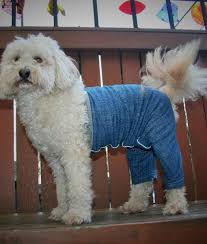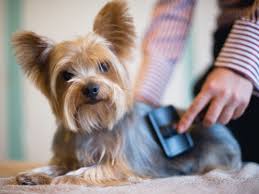TV Bachelor Prince Lorenzo Borghese Finds True Love of a Different Breed
 Prince Lorenzo Borghese has returned for his second time on Animal Radio. While he never found love on ABC's The Bachelor, he did find a special love for the animals. He helps relocate homeless animals on death row in Georgia to new forever homes in Jersey.
Prince Lorenzo Borghese has returned for his second time on Animal Radio. While he never found love on ABC's The Bachelor, he did find a special love for the animals. He helps relocate homeless animals on death row in Georgia to new forever homes in Jersey.
It was the ninth season of The Bachelor when Lorenzo Borghese thought he found true love. But the hunky Italian businessman called it quits and walked away, with little hope of finding his soul mate.
Just over nine years later, with Hollywood in his heart, Borghese found himself in what would be the most important rose ceremony of his life - in Los Angeles. During a Public Service Announcement that Borghese filmed to promote pet adoption, fifteen hopeful contestants begged for a chance to take home a rose and live happily ever after with this real-life prince charming! However, it was left to the imagination that he would be selecting a woman, but it was actually Titan, a male Pit Bull, who stole Borghese's heart, forever changing the course of their lives. To watch the dramatic ceremony, click here.
Borghese states that he wanted to promote Pit Bulls, because they are one of the most loving dogs in the United States. However, they are also the most common dogs to be euthanized in shelters and the most understood. They are not born to be aggressive and to fight. Borghese states that in over 90-percent of the cases when a Pit Bull bites, its owner has trained it to do so. He goes on to state that they are very smart and loyal dogs, who listen to their owners. So if their owner rewards the dog for biting, whether it is another dog or a human, it's positive reinforcement. Humans aren't that different either. If we are brought up with our parents telling us stealing's good, we believe them. So we steal, not because we want to, but because we want to make our parents proud. This is the way Pit Bulls react, because all they want to do is to please their owners. But according to Borghese, if you take a Pit Bull and raise it right, that dog will be the most lovable breed that you can find!
Los Angeles is full of other four-legged beauties just like Titan, longing for their chance to find true love. "Adopt Don't Shop," states Kim Sill, founder of Shelter Hope Pet Shop in Thousand Oaks who worked with Borghese on the Public Service Announcement promoting adoption. "There are thousands of homeless animals looking for love, and they are relying on us to adopt them."
 "All animals deserve to be loved," states Borghese, a longtime animal advocate and founder of Animal Aid USA. "A dog is a perfect companion, and a true testament to man's best friend."
"All animals deserve to be loved," states Borghese, a longtime animal advocate and founder of Animal Aid USA. "A dog is a perfect companion, and a true testament to man's best friend."
Prince Borghese co-founded Animal Aid USA in 2012, which is an all-volunteer nonprofit organization providing education, awareness and resources to the public in an effort to empower positive change for shelter animals. Through monthly transports from high kill shelters to qualified rescues across the U.S., to its spay/neuter clinic providing free sterilization to low-income communities. Borghese's group drives from South New Jersey to Georgia once a month. They go to very high kill shelters in Georgia, where they save on average about 175 dogs month. They take pictures of the dogs and send them to rescues. If a rescue is interested, Animal Aid pays for their vaccinations and spay and neuter surgeries. The rescues then get a healthy dog ready for adoption. This benefits the shelter, as they can make money on the actual adoption fees. The dogs go to shelters in Florida all the way to New Hampshire. These dogs include purebreds, mutts and puppies.
Shelter Hope Pet Shop is a non-profit volunteer-based adoption center that showcases shelter animals in need. Its mission is to support local Los Angeles animal shelters, promote education, and raise awareness of homeless animals in the community. The Shelter Hope business model is the first of its kind, dedicated to eliminating puppy mill pet shops in malls by offering a friendly environment where the public can interact with homeless animals in need of adoption.
How Do Dogs Wear Pants?
Julie Korth, Mozzie's Pants
 Julie Korth, owner of Mozzie's Pants, had been making pants for dogs long before it was cool! After losing her job in the corporate world, she decided to follow her dreams and make dog pants. So many questions. So little time.
Julie Korth, owner of Mozzie's Pants, had been making pants for dogs long before it was cool! After losing her job in the corporate world, she decided to follow her dreams and make dog pants. So many questions. So little time.
Mozzie is Julie's rescue. She had made pants previously for her aging Boxers, Tilo and Thore. Thore was losing bladder control due to old age and the pants stopped the dribbles from reaching her carpets and furniture. Tilo was diagnosed with cancer and the steroids that he was on towards the end of his life caused him to dribble urine. They also had hot spots and Julie didn't want them to wear a cone. The pants also protected the floors and furniture from the urine.
Mozzie was homeless and living on the streets in Los Angeles when Julie adopted him. Mozzie had never had exposure to being indoors, as well as other challenges. Marking and potty training was a big problem. Julie made a pair of pants for him and when Mozzie would mark in the house, she would take the pants off and take him outside; let him smell the pants; go to the bathroom; give him a treat; tell him "good boy" and bring him back in where she would put on a clean pair of pants. Within five days, Mozzie was out of the crate and had stopped marking.
 The next challenge was over the holidays, when they were going to visit people in their homes. Julie was very worried bout Mozzie marking in her mother-in-law's house. They ended up going to about three different houses over the holidays. Julie put the pants on Mozzie and he would mark just once, but after she went through the whole process, he never did it again.
The next challenge was over the holidays, when they were going to visit people in their homes. Julie was very worried bout Mozzie marking in her mother-in-law's house. They ended up going to about three different houses over the holidays. Julie put the pants on Mozzie and he would mark just once, but after she went through the whole process, he never did it again.
So how do dogs wear pants? Are they worn on just their back two legs or on all four? What would pants look like on a dog? Here at Animal Radio, we think that pants are on the back two legs covering their behinds, while tops go on the front two legs.
Julie states that they have several different types of pants for dogs. They have some that go on the back two legs with the elastic hitting right behind their front legs. They also have a walking pant that allows them to use the bathroom outdoors. These pant also cover wounds and hot spots. Their original pants were made for indoor use that deals with incontinence and submissive urination, as well as females in heat. They also make a t-shirt that covers the front legs of a dog and can be used for wound covering. Additionally, the pants also keep the dirt and grime outdoors, so you no longer have to towel off your dog when they come back from a walk in inclement weather.
Mozzie's pants are more than just a fashion statement, they are also utilitarian. Of course, they are adorable and people would laugh and smile when they saw Julie's dog wearing them.
Visit Website
Dogs Get The Flu Too - Canine Influenza - Dr. Debbie
 Can you give your dog the flu, or catch it from him? No way. But dogs can become infected with their own strain of canine influenza. With much attention on the tough human flu season, it's a good time to talk about the differences, and similarities, between human and canine influenza.
Can you give your dog the flu, or catch it from him? No way. But dogs can become infected with their own strain of canine influenza. With much attention on the tough human flu season, it's a good time to talk about the differences, and similarities, between human and canine influenza.
What is Dog Flu?
Canine Influenza, also known as H3N8, was identified in 2004.The disease mutated from a strain of the equine influenza virus and was first detected in racing greyhounds. Canine influenza migrated across the country, with heavy reports in New York, New Jersey, Florida and Colorado. However, some areas of the country have yet to report a single case of canine influenza.
Although the human flu peaks in winter seasons, canine influenza doesn't show seasonality; rather dogs can acquire canine influenza all year round.
The Illness
A dog sick with canine influenza develops respiratory infection signs similar to kennel cough that last three to four weeks. Symptoms include coughing, gagging, sneezing, runny nose and high fevers up to 104-106 degrees. Normal dog temperature ranges 101-102 degrees Fahrenheit.
Most dogs infected with canine influenza will get sick and recover. But like the human flu, fatalities can occur. Approximately 5-percent of canine influenza infected dogs may die, usually to secondary pneumonia. Older pets, pups, or those with chronic illness are more likely to develop pneumonia than the average healthy dog.
There isn't a specific treatment for dogs infected with canine influenza, but most dogs recover with supportive care including good nutrition, rest and maintaining adequate hydration. Severely ill pets with secondary bacterial pneumonia may be hospitalized and treated with IV fluids and antibiotics.
Dog Flu Transmission
Dog flu is similar to human flu in that it is spread by aerosol transmission as well as through contact with contaminated items. Since dogs don't cover their cough or sneezes, the virus is easily carried through respiratory droplets to other dogs and items in the immediate area. Any place that canines frequent, or spend time around, can become contaminated by infected dogs - that includes water bowls, surfaces and even human hands.
What do you do if you notice your dog's play pal is coughing, sneezing and has a runny nose? Separate your dog immediately and closely monitor your dog for symptoms for 7 days - the time it takes for symptoms to appear after exposure to the virus. If symptoms develop, call your veterinarian.
 Pass that timeline and you are probably fine. But don't forget that 10 to 20-percent of infected dogs will shed the virus, but never show any symptoms of illness. These apparently healthy carriers can go on and spread the infection to other dogs without ever becoming ill.
Pass that timeline and you are probably fine. But don't forget that 10 to 20-percent of infected dogs will shed the virus, but never show any symptoms of illness. These apparently healthy carriers can go on and spread the infection to other dogs without ever becoming ill.
Vaccination and Prevention Steps
A vaccine is available through veterinarians for canine influenza. But just like the human flu vaccine, it doesn't guarantee your dog CAN'T get sick. However the vaccine is helpful in decreasing the severity of infection and decreasing the spread of virus.
Vaccination for canine influenza isn't recommended for every dog at this time. Lifestyle and geographic location influence an individual dog's risk of acquiring canine influenza. Dogs that frequent high-density dog areas are at increased risk of canine influenza and are candidates for vaccination. So if your dog goes to areas like the dog park, trainer, groomer or boarding facility, ask your veterinarian if vaccination is a good idea.
Don't think you have to keep your dog locked in the house forever to hide from canine influenza. For most dogs, the risk of contracting canine influenza is quite small. Good sense and preventative steps are useful to avoid dog illness. These include quarantining new or sick dogs, using good hygiene through disinfection and hand washing and avoiding unnecessary contact with suspected infected dogs, especially if your dog is young, old, or has a compromised immune system.
What Should Pet Owners Do?
Flu awareness and preparedness makes good sense - for both people and pets. But remember that there are other causes of canine respiratory disease. So just because you hear a cough doesn't mean your dog has the flu. Ask your veterinarian about your pet's individualized risks for acquiring canine influenza.
Featured veterinarian known as "Dr. Debbie" on national pet radio program, Animal Radio. Ebook author of "Yorkshire Terriers: How to Be Your Dog's Best Friend"; "Pugs: How to Be Your Dog's Best Friend"; "Mini Schnauzers: How to Be Your Dog's Best Friend"; and "Shih Tzu: How to Be Your Dog's Best Friend." Dr. Debbie's books.
Visit Website
 The Dogfather's Grooming Tip with Joey Villani
The Dogfather's Grooming Tip with Joey Villani
How To Give Your Pet A Professional Grooming At Home
A woman contacted Joey who has her pet regularly groomed in a professional salon. She wanted to know how they can make her dog look so much better than she can at home. You know how it is, even our own hair stylists can make our own hair look so much better than we can when we try to do it at home!
The first thing you need to recognize is that you probably don't have the right equipment. You don't have the high velocity dryers and the special tools required.
Whether you have a shorthaired dog or a longhaired dog, you need to do an ideal brushing before you bathe them. This will loosen up all of the dead hair that is stuck in there. Professional groomers don't need to do this, as they have high velocity dryers that will do that job for them.
Since you don't have that equipment at home, the dead hair gets trapped in there. When it dries, it is hard and overwhelming to remove. Brushing before a bath will remove the knots and stimulate the skin. This is almost like exfoliating your pet's skin so everything is working together.
On most bottles of pet shampoo, you will notice that it states to lather your pet up twice. Joey says this is nonsense. You need to bathe your pet until they are clean and there isn't any more dirt running off and the rinse water is clear. Also use a shampoo that is made just for pets.
 Another trick is to buy a silicone based spray just for pets. However, use it sparingly, about once every six weeks or just when bathing your pet. Just spray it on while your dog is wet. Then, let your pet air-dry about 80-percent. Next, take a brush through the slightly damp hair and spray just a little more silicone. This will help the hair to lie down and will also help to pull out the hair.
Another trick is to buy a silicone based spray just for pets. However, use it sparingly, about once every six weeks or just when bathing your pet. Just spray it on while your dog is wet. Then, let your pet air-dry about 80-percent. Next, take a brush through the slightly damp hair and spray just a little more silicone. This will help the hair to lie down and will also help to pull out the hair.
If you have a shorthaired dog, use a rubber curry brush. If your dog has long hair, you are going to use a metal slicker brush.
When your dog is then about 100-percent dry, brush and comb them one more time.
When you are done, you will probably look at your pet and say to yourself, "Wow, I did a really good job, almost as good as my groomer!"
Animal Radio News - Lori Brooks
 Dog Flu Spreading
Dog Flu Spreading
There was a dangerous strain of dog flu spreading through the western US. Health officials in the Seattle area had confirmed tests showing the virus was found in dogs who stayed at a local kennel and doggie daycare facility where at least 80 dogs developed respiratory illness. The virus began spreading in the Chicago area and sickened more than 1,000 dogs in the Midwest. Although most dogs recovered, a handful of deaths were reported. Experts said this strain of the virus, called H 3 N 2, was first seen in Asia but then appeared in the U.S., so none of the American dogs had immunity to fight it off. Dog flu spreads the same way human flu does: through virus droplets in the air from a sneeze or cough, or by touching contaminated objects or surfaces. The virus could live in the environment for about two days and could linger on hands or clothing for up to 24 hours. The most common symptoms of dog flu are high fever, cough, runny nose, watery eyes, sore throat and loss of appetite. Dogs who catch it usually feel lousy for about two weeks. In Asia, where the H 3 N 2 strain of canine influenza was first detected, it was also reported to infect cats. But in the U.S., cases of cats developing dog flu are extremely rare. However, there is "some evidence" that pet guinea pigs and ferrets could also become infected.
 Emotional Support Turkey Flies Delta Airlines
Emotional Support Turkey Flies Delta Airlines
Did you see the photo of a turkey that took the Internet by storm after boarding a Delta Airlines passenger flight? It showed the bird sitting opened beaked while being hugged by its owner. Another photo was also shared online of the turkey being transported in a wheelchair. It is believed the turkey was given a seat on the plane as an "emotional support animal."
Italy Requires Silent Fireworks for Animals
If you're a pet parent, there's probably a few days of the year you dread - like New Year's Eve or the Fourth of July. Fireworks wreak havoc on animals, especially dogs, with their sensitive hearing. Many even hurt themselves trying to escape or hide. They can bolt and risk getting lost, hit by cars and wind up in a shelter. Well, one town in Italy took a big step to reduce the fear of fireworks in their non-human population by making a law that fireworks in their town must be silent as a way of reducing the stress that the loud noises cause to animals-not just pets, but wildlife too.
Dog's Owner Passed Away - Hospital Adopted Dog as Mascot
A dog named Pirate and his owner arrived at a hospital in Argentina. The dog's owner went in for surgery and sadly passed away. Pirate never left the hospital and then roamed the halls, hoping to meet again with his human and best friend. Hospital workers didn't know the dog's real name, but they dubbed him Pirate because no matter how hard they tried to keep the dog outside hospital walls, the pooch re-entered the health center and visited the last place he saw his owner alive, room 404. When the pet owner died, the hospital's staff wanted the dog gone. However their feelings towards the pet changed when they realized how loyal the dog was. Pirate was loved by all staff members and had been officially adopted as the hospital's mascot. Pirate came and went as he pleased. No one really knew where to find Pirate during the day, but at night they could always find him comfortably sleeping outside room 404.
 Listen to the entire Podcast of this show (#1208)
Listen to the entire Podcast of this show (#1208)





